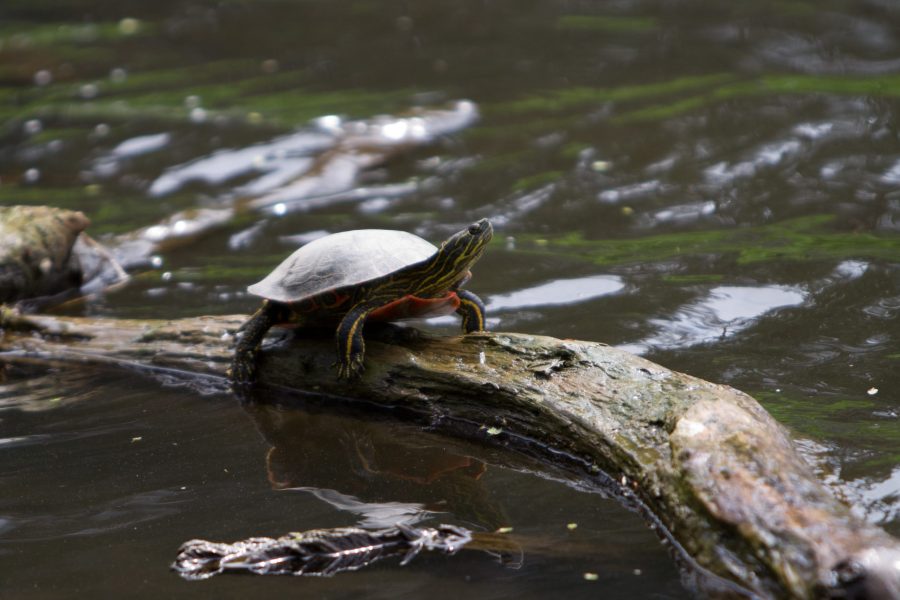By now, the tamaracks have turned a bright orange and the yellow-rumped warblers have flown south. With a 5:00 pm sunset and snow in the forecast, the Arboretum is on the brink of winter. As snakes and frogs prepare for hibernation in rodent burrows and old stumps, turtles are preparing for a long winter beneath the ice.
Five species of turtle find a home in the Arboretum. Named for their bright orange undersides and streaks of yellow, the painted turtle (Chrysemys picta) is the most common turtle in the Arboretum. Snapping turtles (Chelydra serpentina), spiny softshells (Apalone spinifera) and other common species can also be found in Lyman Lakes and on the Cannon. All of these species survive underwater each winter through a miraculous array of adaptations.
Turtles are ectotherms, meaning their body temperature shifts to match the temperature of their surroundings. When submerged underwater, a turtle’s body temperature drops by up to ninety percent, usually settling at about 39 degrees Fahrenheit. Within hours of being submerged, a turtle’s blood-oxygen levels drop to near zero. With the same percentage of oxygen in our blood, humans would survive for three to four minutes. Painted turtles survive for three to four months.
In lieu of air, turtles rely on stored energy and “cloacal breathing” to survive the duration of winter, drawing oxygen from water as it passes over blood vessels in the skin, mouth and cloaca, or the hind end. If oxygen becomes depleted, painting and snapping turtles can switch to anaerobic respiration, which is a form of metabolism that does not require oxygen. While practical for underwater environments, anaerobic respiration can lead to a build-up of lactic acid and damage turtle tissue. To prevent damage, turtles’ skeletons and shells release carbonate buffers to neutralize lactic acid build-up. Come spring, turtles are desperate to bask in sunlight, effectively increasing their metabolic rate and ridding their body of acidic by-products.
As winter approaches Northfield, turtles are at the front end of a few daunting months of underwater survival.










